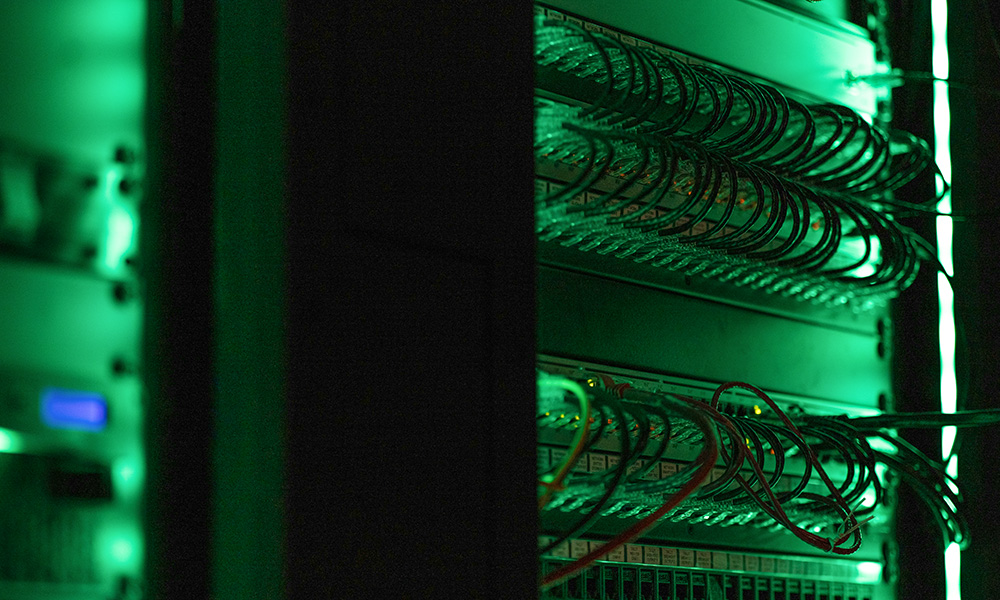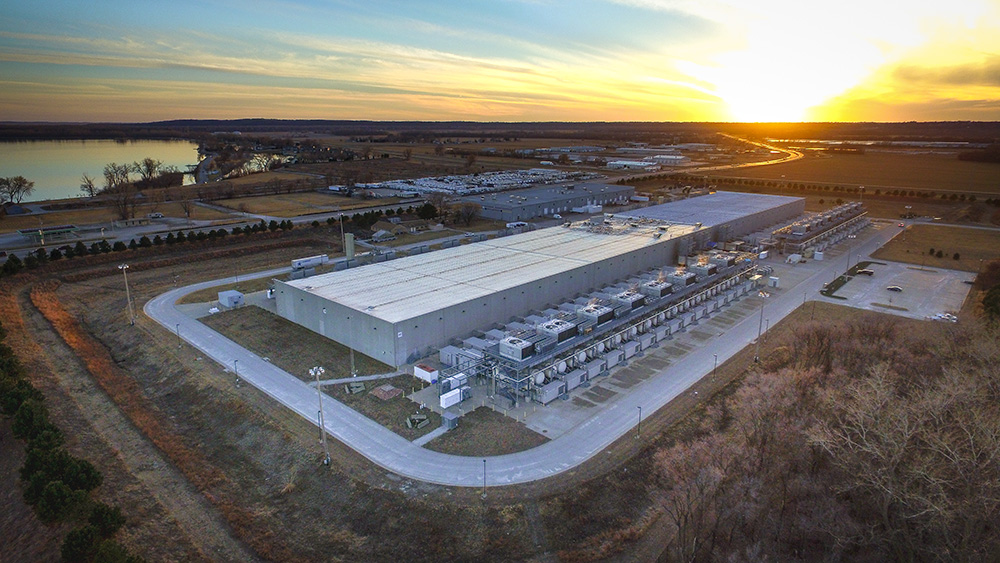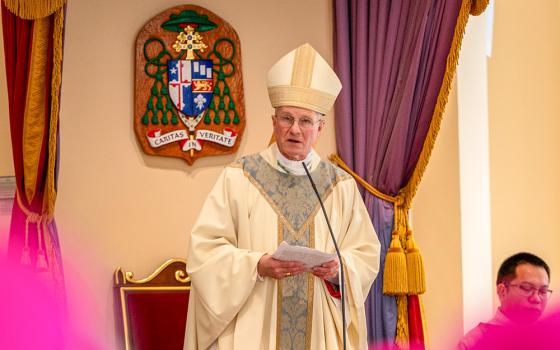
(Unsplash/Tyler)
Public discourse surrounding artificial intelligence (AI) has ramped up Catholic concern for the technology, with Pope Francis' recent remarks at the G7 summit echoing social and theological concerns toward the innovation. Within the Catholic Church, regard for AI varies — while Francis has pushed for AI's proper use without undermining human dignity and creativity, the U.S. Conference of Catholic Bishops has embraced AI in certain forms, like in evangelization and faith formation.
Yet, another aspect of AI poses ethical challenges for Catholics who, like Francis, are committed to environmental justice.
AI is an energy-intensive technology. Generative AI systems — systems capable of generating content based on content-training — are reliant on significant amounts of electricity.
Though exact data on this issue has previously been opaque, the International Energy Agency now has calculated more precise estimates. In its forecast for global energy use released in January, the agency estimated that projections for electricity consumption associated with data centers, cryptocurrency and AI represented almost 2% of global energy demand in 2022.
Forbes has reported that AI applications like ChatGPT consume more than half a million kilowatts of electricity each day, likening its power usage to nearly 180,000 U.S. households.
Digiconomist founder Alex de Vries calculated that every Google search that produces a Google AI "snapshot" is equivalent to consuming three watt-hours of electricity. And many within the AI community, including OpenAI CEO Sam Altman, anticipate that these energy demands will skyrocket with AI expansion.
AI systems are also water-intensive. In the United States, online services and generative AI products are supported by data centers, which require cooling mechanisms to function. As AI systems have expanded, these data centers require more water to cool their servers.
A single ChatGPT conversation uses about 50 centiliters of water (the equivalent of one plastic water bottle). Though these figures may seem innocuous, as environmentalists know, "water bottles" add up. Forbes estimates that AI's projected water usage could approach 6.6 billion cubic meters by 2027.
These figures are startling, not only because of their scope but also because they threaten to exacerbate preexisting environmental problems, such as global freshwater scarcity. The World Wildlife Federation reports that 1.1 billion people lack access to water, and at least 2.7 billion people struggle with water scarcity for at least one month of the year.
Pollution, agricultural inefficiencies and climate degradation also threaten the global water supply. Yet AI-sustaining companies set their sights on expansion.

An aerial view of a Google data center in Council Bluffs, Iowa (Wikimedia Commons/Chad Davis Photography)
While some companies claim to have plans to recoup associated water usage by 2030, these claims are dubious. Google produced a glowing water commitment that states, "Each and every one of us relies on clean, fresh water. This precious resource is vital for the health of communities and is essential to all life on earth." The company says, "We will continue our stewardship journey, supporting water resilience and abundance to ensure water security."
But Google also has pursued projects that threaten local ecosystems.
In 2020, Google pursued the construction of a data center in Santiago, Chile, amid a concerning drought that threatened the country's drinking water supply. Residents strongly opposed the project, given Google's disclosure that the center would consume 7.6 million liters of potable water daily. Chile's weak environmental regulation infrastructure has resulted in humanitarian harms that have impacted vulnerable groups, including Indigenous populations.
These and other environmental impacts of AI have, for so long, been opaque, as companies have not had to disclose energy usage metrics. This changed on March 6, when the U.S. Securities and Exchange Commission issued a final climate rule requiring registrants to provide climate disclosures in their annual reports and registration statements. This mandatory disclosure mechanism will enable more accurate AI energy calculations and transparency.
Advertisement
Yet we need not wait for new reports to make a judgment call. Current estimates on AI's energy usage and subsequent environmental impacts paint a concerning picture — one that Francis has painted in Laudate Deum. While reflecting on current and projected damages of the climate crisis, Francis argues that insufficient grounding for environmental concerns "should not lead us to ignore the real possibility that we are approaching a critical point. Small changes can cause greater ones, unforeseen and perhaps already irreversible, due to factors of inertia."
His words suggest prudence toward technological advancement such as AI expansion.
In Laudate Deum, Francis calls for a broader perspective, "one that can enable us to esteem the marvels of progress, but also to pay serious attention to other effects that were probably unimaginable a century ago. What is being asked of us is nothing other than a certain responsibility for the legacy we will leave behind, once we pass from this world."
Heeding this call to responsibility, we should respond to AI's current and projected environmental costs with a critical eye.
While generative AI has captivated tech enthusiasts, financial leaders and even students, captivation does not imply wisdom. As Francis observed in Laudato Si', "We cannot claim to have a sound ethics, a culture and spirituality genuinely capable of setting limits and teaching clear-minded self-restraint." Such power, he warns, holds the capability to destroy life.
AI's destructive capacities are visible in strained ecosystems and they also come to the fore in the labor landscape. In 2022, a Time magazine investigation uncovered labor exploitation in OpenAI's system training processes, and found that subcontracted Kenyan data labeler-workers were paid as little as $1.32 per hour to train AI systems.
These exploits of AI illustrate how, as Francis reminds us, "not every increase in power represents progress for humanity."
Generative AI reflects the rot of the technocratic paradigm. Humanity has become transfixed with this new avenue for "possession, mastery, and transformation."
Proponents of AI laud the technology for its contribution to workplace efficiencies, improvements to student productivity and offerings of near-infinite artistic renderings in visual media. Yet this praise obscures the harms that prop up AI systems — from environmental and labor harms to intellectual theft (as AI models are trained on scraping of the open internet, including masses of copyrighted data).
In Laudato Si', Francis says, "We have to accept that technological products are not neutral." His words ring true in the face of AI systems, which are conditioning us to accept expansions in energy usage, exploitation and theft alongside technological "efficiency."
Using an AI priest to ask a doctrinal question might seem innocent enough — but as Francis reminds us, "decisions which may seem purely instrumental are in reality decisions about the kind of society we want to build."
As we learn more about AI systems' energy costs and environmental impacts, our institutions can make more precise and sound pronouncements on the technology. Still, Catholics should decry AI outright instead of waiting — either for more precise metrics on energy consumption, or for AI's swan song.





